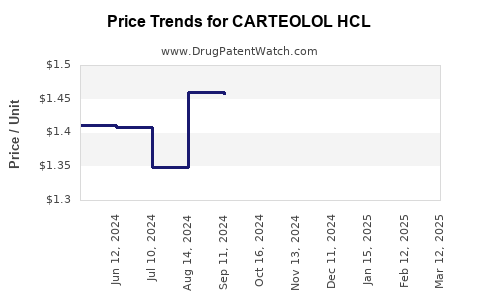Drug Price Trends for CARTEOLOL HCL
✉ Email this page to a colleague

Average Pharmacy Cost for CARTEOLOL HCL
| Drug Name | NDC | Price/Unit ($) | Unit | Date |
|---|---|---|---|---|
| CARTEOLOL HCL 1% EYE DROPS | 61314-0238-05 | 1.57270 | ML | 2024-11-20 |
| CARTEOLOL HCL 1% EYE DROPS | 61314-0238-10 | 1.55371 | ML | 2024-11-20 |
| CARTEOLOL HCL 1% EYE DROPS | 61314-0238-05 | 1.51220 | ML | 2024-10-23 |
| CARTEOLOL HCL 1% EYE DROPS | 61314-0238-10 | 1.50275 | ML | 2024-10-23 |
| >Drug Name | >NDC | >Price/Unit ($) | >Unit | >Date |


